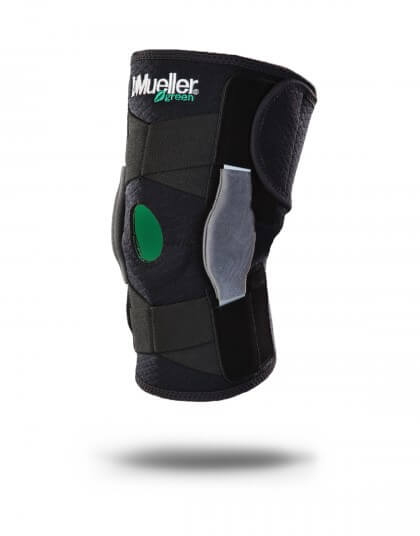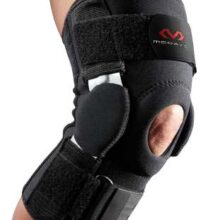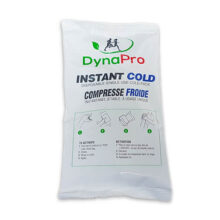Bio-Logix Knee Brace
Typically Ships in 3-5 Business Days
The McDavid Bio-Logix Knee Brace combines a semi rigid lightweight design and bi-lateral aluminium dual axis geared hinges to provide a fluid feel and a natural range of motion.
This is a fluid filled cyst that causes a bulge and a tight sensation behind the knee, together with pain behind the knee. The pain may worsen when the patient fully flexes or extends the knee or during periods of intense physical activity. Another name for this cyst is a popliteal cyst.
Two types of Baker’s cyst are differentiated – primary and secondary.
The primary type tends to occur in children. There is no connection between the joint space and the popliteal fossa. This type often resolves spontaneously.
A secondary Baker’s cyst is commoner than the primary type and is usually the result of an injury to the knee joint – most typically arthritis (which in turn causes knee inflammation) or a knee meniscus tear.
Either of these problems can cause excess fluid to accumulate around the knee. This excess fluid can drain into the popliteal fossa via a connection with the joint space, causing a cyst to eventually develop behind it.
One rare possible complication of a Baker’s cyst is bursting of the cyst, causing fluid to leak into the calf area. This can then result in more intense knee pain, calf swelling and redness. It is sometimes difficult to distinguish between a ruptured Baker’s cyst and a DVT (blood clot in the leg). Some affected individuals will sometimes have a feeling as though a liquid is running down the back of the calf.
A Baker’s (or popliteal) cyst that is caused by a soft tissue injury like a torn meniscus (or cartilage) can usually be treated by one or more of the following:
If the underlying cause of the Baker’s cyst is arthritis (either an autoimmune disease like rheumatoid arthritis, a wear and tear type like osteoarthritis or even psoriatic arthritis), then that cause needs to be actively managed. For additional information on treatment options, please review our article on arthritis here. The remedies can extend up to and potentially include knee replacement.
Another major cause of posterior knee pain is a possible infection. There are 3 common types of infection that could be at work here:
Any of these infections can be a cause of pain behind the knee, although this pain would be accompanied by redness, warmth and swelling in the same area.
If the symptoms being experienced together with posterior knee pain resemble those listed above, we suggest seeing a doctor for medical advice, diagnosis and treatment. Doctors can treat skin or bone infections using a range of antibiotic drugs. Osteomyelitis is a serious infection that usually needs to be treated initially in hospital with antibiotics injected directly into a vein. Antibiotic treatment is usually needed for at least 4 to 6 weeks.
Infections of the bursae of the knee can also usually be treated using the R.I.C.E. protocol. We provide more information on this subject here.
Pain behind the knee can also be a result of a soft tissue injury such as a meniscus tear, muscle or tendon strain or ligament sprain. The pain from these types of injuries may appear suddenly and be caused by traumatic injuries, or they may be the result of overuse of the knee.
The most common knee injuries that could cause posterior knee pain are:
Hamstring strains or PCL injuries can sometimes produce a popping or snapping sensation at the time the injury first occurs. A hamstring injury tends to affect the middle of the back of the thigh most frequently.
In most cases, the posterior knee pain from these injuries will be accompanied by swelling behind the knee and possibly by contusions in the same area if the injury is sufficiently severe.
Hamstring injuries may also be accompanied by muscle spasms while damage to the posterior cruciate ligament or meniscus tears can cause knee instability, or a feeling that the knee cannot support the full weight of the body as it normally can.
The knee injuries discussed above can in most cases be treated by resting the injured ligament, tendon, muscle or meniscus. To do so, the affected individual can avoid placing weight on the knee as much as possible as well as by icing, compressing and elevating the knee above heart level whenever possible. After these measures, recuperation can be aided by doing specific exercises. Certain types of knee brace can be instrumental in providing support to the knee soft tissues and helping them to heal more quickly.
While waiting for the above treatments to work, the patient can use painkillers like paracetamol and non-steroidal anti-inflammatory medicines like ibuprofen.
A discussion about the possible causes of pain behind the knee would not be complete without mentioning that this pain can (admittedly rarely) be the result of a tumour, either malignant or benign.
If the tumour is malignant, the types of cancer that are most frequently implicated are:
Osteosarcomas are rare bone tumours which affect mainly children, teenagers and young adults.
As with all types of cancer, our advice is to obtain specialized medical assistance as soon as possible, preferably from a doctor with cancer expertise.
Deep vein thrombosis (DVT) is another possible contributor to posterior knee pain. It is a condition caused by a blood clot in a deep vein.
Although the blood clot may be located in other parts of the body such as the thigh, pelvis or calf, it can still produce referred pain at the back of the knee. The pain would not only be behind the knee, but the entire leg below the level of the clot would be swollen and somewhat painful.
DVT is a potentially life threatening condition, especially if a piece of the blood clot breaks free and travels to the lungs. Even if this does not happen, a blood clot can damage the valves of a vein. The results could then include pain, swelling, ulcers and other serious conditions.
If you believe you may be suffering from Deep Vein Thrombosis, we suggest consulting a doctor immediately Doctors can treat DVT using anticoagulation medications such as heparin, warfarin and others.
After treatment for a DVT, patients need to take blood-thinning medication for a minimum of 3 to 6 months.
In addition, those desiring to reduce the risks of developing DVT (or other lower leg venous problems) should consider wearing compression socks and stockings. They use graduated compression technology to prevent blood pooling in the lower leg and instead force it back up the legs and towards the heart.
More information on treatment options for deep vein thrombosis can be found here.
In some cases, pain at the back of the knee is sometimes a secondary effect of (or “referred from”) spinal problems or an injury to the front of the knee.
Doctors can diagnose the type of referred pain and suggest possible solutions.

Typically Ships in 3-5 Business Days
The McDavid Bio-Logix Knee Brace combines a semi rigid lightweight design and bi-lateral aluminium dual axis geared hinges to provide a fluid feel and a natural range of motion.

In Stock
The DynaPro Reusable Hot/Cold Pack is a versatile non-toxic compress that you can use for both hot and cold therapies and for treatment of both acute and chronic injuries.


In Stock
The Mueller Sports Medicine Green Adjustable Knee Brace offers maximum support for weak knees, injured knees, and arthritic knees. One size. Fits either knee.

In Stock
Lightweight and low profile for comfort
Our Bio Skin Hinged Knee Skin is one of the lightest hinged knee braces available. The offset, bicentric hinges conform to the shape of the leg and provide extra support to knees with ligament damage. The Hinged Knee Skin provides excellent compression to control swelling and pain caused from a meniscus tear or an LCL or MCL injury, and to speed up the healing process in a damaged knee joint.

In Stock
Structural support for knee instability
Our Bio Skin Hinged Knee Skin – Front Closure is one of the lightest hinged knee braces available. The offset, bicentric hinges conform to the shape of the leg and provide extra support to knees with ligament damage. The Hinged Knee Skin provides excellent compression to control swelling and pain caused from a meniscus tear or an LCL or MCL injury, and to speed up the healing process in a damaged knee joint.

Typically Ships in 3-5 Business Days
The McDavid Knee Brace With Dual Disk Hinges has an open 360˚ padded buttress that isolates and supports the patella and bound edges prevent irritation. In addition, a perforated back panel provides heat and moisture management and all-around comfort.
Level 3: Maximum Protection – Moderate medial and lateral support for improving stability; aids in recovery

In Stock
Patella subluxation and patellofemoral pain treatment
The Bio Skin Premium J with Conforma Hinge combines function, comfort, and affordability. Constructed from Bio Skin’s breathable materials, the Premium J gives excellent compression without causing discomfort. A buttress on the outside of the patella prevents patella subluxation and knee dislocation. The two elastic straps that cross over the knee help seat the patella in the trochlear groove to increase surface contact area and decrease patellofemoral painPremium J with Conforma Hinge – Protection against patellar subluxation

In Stock
The DynaPro Single Use Instant Cold Pack will help reduce pain, swelling and bleeding in the immediate aftermath of suffering an acute injury.

In Stock
Made of lightweight aluminum with a comfortable and durable underarm pad as well as a hand grip. Available in different sizes based on height.